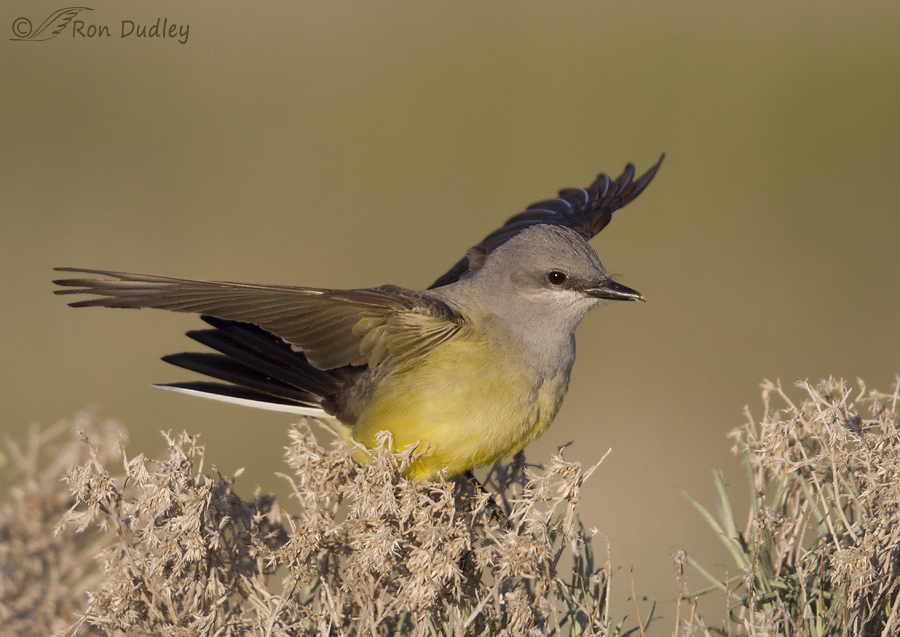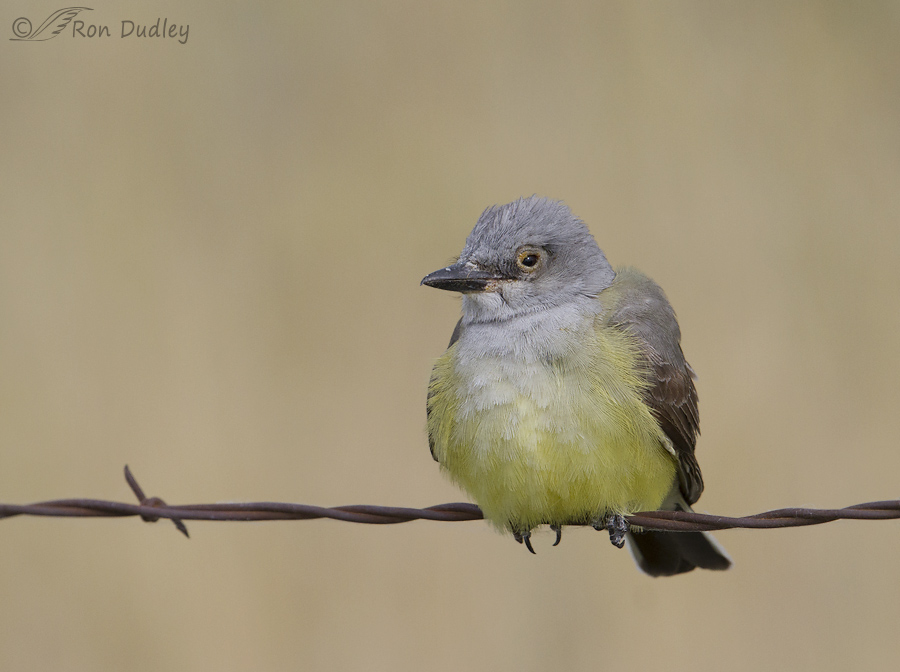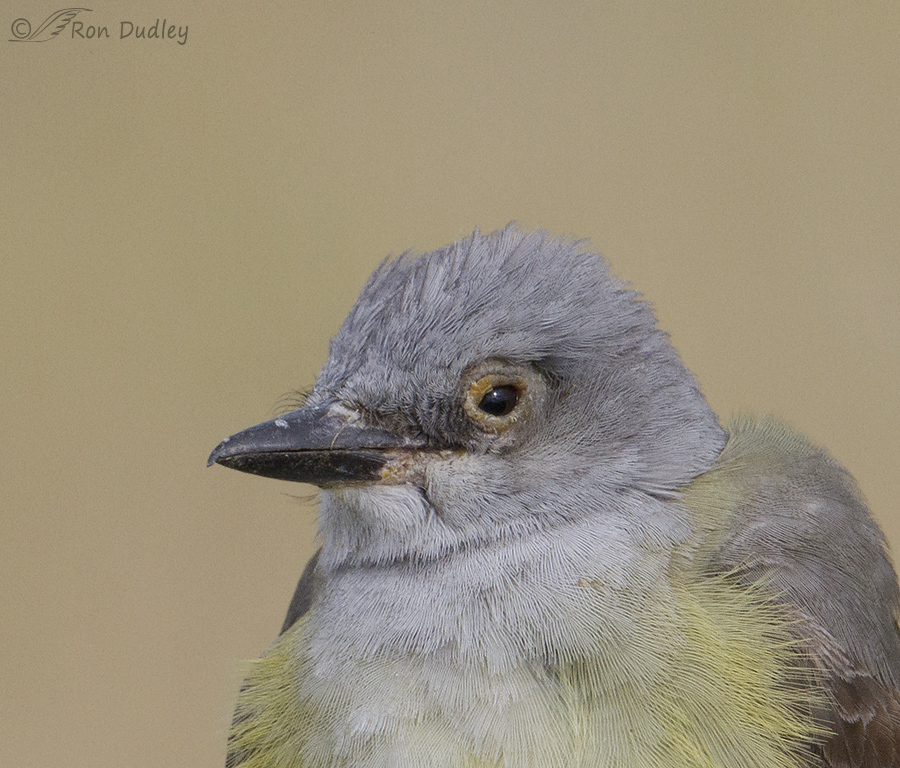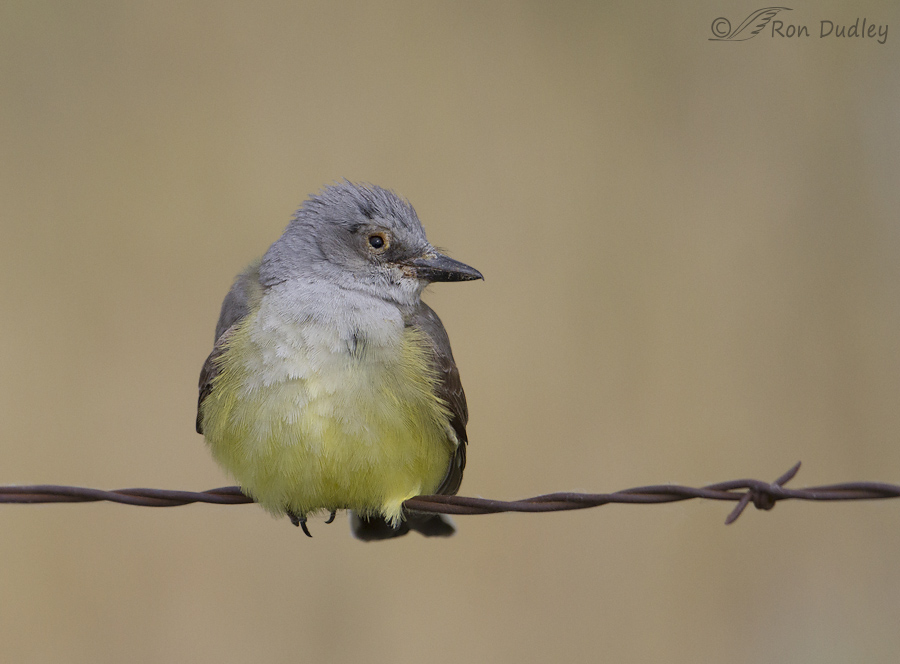Whenever I get an up-close look at a bird in the wild through my lens it’s always my subconscious expectation that it will be vigorous and healthy. It disturbs me when that doesn’t turn out to be the case.
1/3200, f/5.6, ISO 640, Canon 7D, Canon EF500mm f/4L IS II USM +1.4 tc, not baited, set up or called in
For the sake of comparison this is what a healthy Western Kingbird eye looks like, which is quite a contrast…
1/1000, f/8, ISO 640, Canon 7D, Canon EF500mm f/4L IS II USM +1.4 tc, not baited, set up or called in
to this Western Kingbird that I encountered two days ago near Bear River Migratory Bird Refuge. Notice that the unfeathered skin around the left eye and at the base of the bill appears to be covered with lesions and the overall appearance of the bird is an unhealthy one.
1/1000, f/8, ISO 640, Canon 7D, Canon EF500mm f/4L IS II USM +1.4 tc, not baited, set up or called in
A close crop of the head reveals more detail.
1/2000, f/5.6, ISO 640, Canon 7D, Canon EF500mm f/4L IS II USM +1.4 tc, not baited, set up or called in
The same symptoms present themselves on the right side of the face of the bird. This kingbird could fly but seemed somewhat lethargic.
I’m no vet or rehabber but this looks to me like it could be avian pox, a fairly common disease of birds caused by avipoxvirus. The disease typically causes wart-like growths (lesions) to appear on the unfeatherered parts of the bird. Avian pox is particularly common in finches and doves and I’ve seen and photographed it on some of those species several times in the past but this is a first for me on a kingbird.
These are not pretty pictures and this not a happy story so I apologize for the Friday morning downer but I find all aspects of the lives of birds to be interesting, even when it’s unpleasant.
Ron






As a rehabber, I had two Kingbirds last summer who both developed pox. It was not a severe case, and after being placed in isolation and receiving normal care for several weeks, they eventually recovered. It is extremely contagious (among birds), so great care must be taken to wash hands etc when coming into contact and to keep affected birds in quarantine. House Sparrows seem to get it a lot.
I am sorry. But glad to be educated. Thank you.
Do they ever recover from pox conditions do you know? And, as Patty said, I hope we don’t have a part to play in it. And fear we probably did.
Yes, they sometimes recover, Elephant’s Child. Often they don’t. As far as I know the only role humans play in the transmission of this disease in wild birds is not keeping clean bird feeders clean. Here’s a link to some basic information on avian pox for anyone interested – https://www.michigan.gov/dnr/0,4570,7-153-10370_12150_12220-26362–,00.html
I’m glad you posted this – it’s just another aspect of learning about birds. One thing I find interesting about the sick bird is that I can see the lethargy. You captured that very well.
Thanks, Susan. I’m often hesitant to be the bearer of bad news on my posts but I just can’t ignore some things…
It is good not not ignore or downplay reality. No need to be unnecessarily shocking. But if we are not aware of the reality regarding our feathered friends, how can we do anything to help them? I hope you continue to make us aware of things we should know about.
The poxvirus doesn’t kill birds outright. They can recover. It often debilitates them to the point that they can’t forage or watch for predators, and so die. In rehab, we can’t treat the virus, but we can isolate the bird and give supportive care while the disease runs it’s course. Some species appear to be more susceptible than others. As far as I know, which is limited, any species could be affected. Guess I’m trying to say that there is hope for your Kingbird to get well. He/she may then be immune to further infections.
Thank you for sharing your vision and insight!
“As far as I know, which is limited, any species could be affected.”
Mikal, The Michigan Department of Natural Resources has this to say on the subject: “Approximately sixty species of birds from 20 families have been diagnosed with avian pox”.
Yes, seeing an unhealthy, wounded or suffering bird is disturbing. I can’t help but wonder if any of it is related to disturbed or polluted environmental factors….I hope not. Even more, I hope it can run its course and heal.
If it doesn’t get worse I have hope for this bird, Patty. I’ve seen cases much worse than this.
The contrast between the first and the second photo is evident. But I don’t find it unpleasant. In fact the more I look to the second shot the more I have an impression that in spite of beeing unhealthy the bird still shows some dignity and serenity.
Great detail of the head.
Thanks for sharing.
“the more I look to the second shot the more I have an impression that in spite of beeing unhealthy the bird still shows some dignity and serenity.”
Good point, Jorge – much like many sick humans do.
I like that you share the good, the bad and the ugly. It’s a lesson I needed to be reminded of.
Thank you, Arwen.
so sad! Great shots Ron! They have a difficult life.
Charlotte
Yes, they often do, Charlotte.
Very informative series, certainly worth sharing, good or bad. I noticed a Phoebe with a similar condition recently, while it was nest building. Its left eye was entirely sealed. Two weeks later, when the nest held hatchlings, what appeared to be the same bird (but might not have been) had two open eyes, however the left eye did not appear to healthy or typical, just improved to the extent that it was open. I also have never seen flycatchers with poxlike symptoms. Excellent camera work, as always.
Kelly, It’s my understanding that affected birds sometimes improve and eventually survive this virus. I hope that’s the case with your phoebe.